Product Spotlight: CSM Yeast
Product Spotlight: CSM Yeast
CSM yeast was derived from Bordeaux and helps create a vibrant aromatic profile. CSM aids in adding complexity to the palate and pairs well with malolactic fermentation.
Why you want to use it:
It’s the perfect yeast for the Chilean fruit. It reduces vegetal aromas, adds complexity, stabilizes color, and helps increase the aromatic profiles of berries and spices.
Use Tips:
Fermentation starts quickly with this yeast. Be prepared to see Brix drop 24 hours after inoculation. It can stand up 14% ABV and can handle temperatures from 59–90°F. However, I highly suggest keeping your fermentation temps lower than 75°F. Once you hit 80°F you lose aromas and “burn off” flavors. Keeping your wine between 59–75°F during fermentation is a best practice.
You also want to use nutrients when using CSM; nutrients such as Fermaid-O and Fermaid-K. CSM tends to produce H2S (rotten egg smell) if there aren’t enough nutrients during fermentation.
Avoid cold shocking the yeast at inoculation. You’ll want to get the must and the yeast starter within a few degrees of each other before pitching the yeast starter. But without temperatures falling lower than 55°F. Temps below 55°F could stall fermentation and/or kill the yeast.
Goes best with:
CSM was cultivated to help ferment Cabernet Sauvignon, Cabernet Franc, Grenache, Merlot, Sangiovese, Petit Verdot. However, we have seen it used on Carmenere, Malbec, and Syrah from Chile with great results.
Dosage:
6gm/gals
Flavor Profile:
Cherry pit, raspberry, blackberry, spice, violet, bark, and sweet pepper
Ready to make wine? Musto Wine Grape Company is here to help you make the wine of your dreams! The Spring South African & Chilean winemaking season starts soon! Secure your winemaking grapes or juices and give us a call at (877) 812-1137 to speak with one of our Musto Crush Crew members. We can get you set up with everything you need and provide customer support along the way to ensure your success!
2023 Chilean Winemaking Harvest Update
2023 Chilean Winemaking Harvest Update
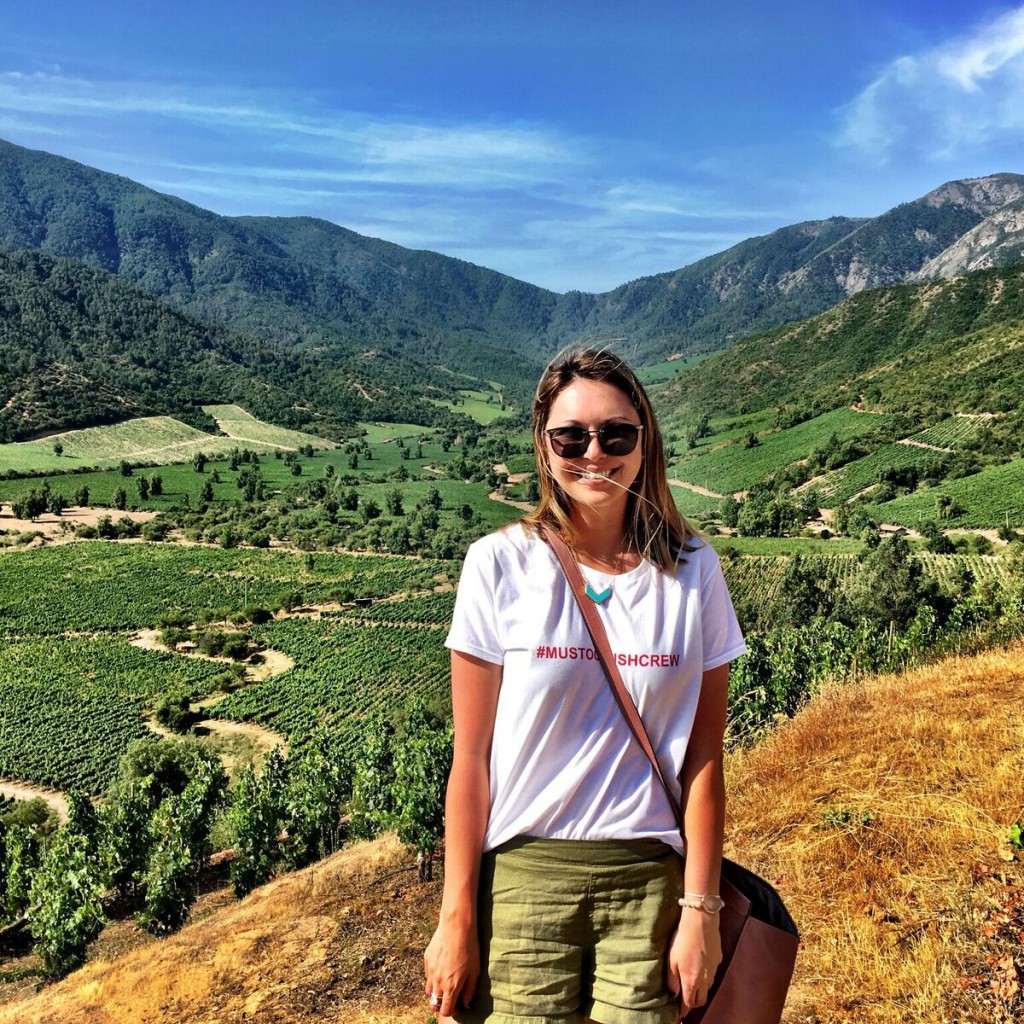
{above photo from our trip to chile a few years ago}
Hello, Winemakers! It’s time to get ready and prepped for the Chilean grape and juice arrival. The Chilean Winemaking Season starts in early April and ends in May. Our growers have planned to start harvesting white wine grapes around March 15th and red grapes around March 23rd. Once on the boat, we will have a better update on delivery timing.
Musto’s 2023 Chilean Offerings:
Chile Grapes: Cabernet Sauvignon, Cabernet Franc, Carmenere, Malbec, Merlot, Petite Verdot, Pinot Noir, Syrah, Chardonnay, Pinot Grigio, Sauvignon Blanc, and Viognier
Chilean Juice: Cabernet Sauvignon, Cabernet Franc, Carmenere, Malbec, Merlot, Petite Verdot, Pinot Noir, Syrah, Chardonnay, Pinot Grigio, Sauvignon Blanc, Viognier, and Muscat.
Chilean Viticulture:
Chile is the same latitude as northern California! Chileans can grow many different types of grapes here, just like in California. The cooling influences they receive from the Pacific Ocean, the Andes Mountains, and the warm and plentiful sunshine attributes to their wine-growing success. Their warm Mediterranean climate helps the grapes to ripen. The Humboldt current, flows up from Antarctica, along the Chilean coast, pushing the cool air inland by the wind patterns. This cooling effect helps cool off the grapes while they mature. Colchagua and Curico Valley both benefit from this ocean influence, which allows these regions to produce grapes from fertile soil for wines that are gaining premium reputations.
The Curico and Colchagua Valleys have some of the best soils in Chile, composed of mostly sand, clay, decomposed granite, and volcanic-alluvial. These regions only receive around 23.3 inches of rainfall per year and little to no rainfall during their summer months. The grapes are safe as harvest approaches, and the weather ensures that the grapes are fighting for water and creating a more intense fruit.
What are Brix?
The harvest is based on sugar levels in the grapes. This information comes from a simple measurement called degrees brix (also known as specific gravity). It’s important because it tells us how much water is present in our must (the mixture of crushed grapes and yeast starter). The lower this number is, the more concentrated or “dry” your wine will be when finished fermenting. The ideal Brix levels for red wines is 23-25 Brix, and for white wines 21-24 Brix.
How are the grapes harvested?
The grapes are handpicked. The pickers walk through rows of vines looking for clusters of ripe fruit to cut off with long-handled knives called “cortadores.” They then gently place these into plastic tubs where they’re carried back to trailers parked nearby–a process that takes place over several days (usually during the morning). Once all of this has been completed successfully, we begin our shipping process!
How do you know when to harvest the grapes?
The wine grape harvest is based on sugar levels in the grapes: if they’re too low you can’t make good wine; too high and it will taste too sweet and you’ll most likely have a stuck fermentation. Each month/week/and as harvest nears, day – the grapes are sampled in the field to see if they have reached their optimum levels yet.
Shipping from Chile to MWG…
Once the grapes arrive at port they are sent to Musto Wine Grape Co. and we unload them into our coolers. Everything is shipped in a refrigerated container and never breaks the cold chain. This ensures that the high quality of the fresh Chilean products are intact. After they arrive it is time for you to pick up your grapes and/or juices and get winemaking!
2023 Chilean Harvest Update:
The Chilean crop looks excellent this season. We are hoping to see the Chilean grapes and juices arrive at around 23-25 Brix, very sweet and juicy. Arrival dates look to be somewhere at the end of April / early May depending on the type of winemaking grape/juice. Give us a call (877-812-1137) or email us at sales@juicegrape.com with any arrival questions.
Fun Fact About Chile: Chile produces more than 1 million tons of grapes every year!
Chilean wine making is a time-honored tradition, and the results are worth it! This will be 18+ years of Musto Wine Grape working with our Chilean vineyards and every year the wines created get better and better. We hope you enjoyed learning about the Chilean wine-making season. It’s an interesting process that requires a lot of work, but in the end, it pays off with delicious wines!
For more information on making wine from Chile check out these blogs posts:
- 7 Tips for How to Prep for the Chilean Wine Harvest
- Bud Break in Chile
- How to Make Chilean Cabernet
- Crushing Chilean Malbec Grapes
- Making Chilean Carmenere
- Wine Spotlight: Chilean Carmenere
- How to Make Wine from Chilean Juice
- How Much Wine Will A Case of Grapes from Chile or South Africa Make?
- Details from Our Trip to Chile
- Notes on Making Sauvignon Blanc from Chile
- Video About Curico Valley
- Winemaker Interview with Manuela Astaburuaga from Our Chilean Vineyards
- Our Wine Grapes of Chile Video
Can I make my own? Musto Wine Grape Company is here to help you make the wine of your dreams! The Spring South African & Chilean winemaking season starts soon! Secure your winemaking grapes or juices and give us a call at (877) 812-1137 to speak with one of our Musto Crush Crew members. We can get you set up with everything you need and provide customer support along the way to ensure your success!
The Winemaker’s Think Tank: Vol 25 – Why is my wine evaporating?
What’s the Winemaker’s Think Tank?
Every Thursday we will post about a few frequently asked questions that our winemaker has answered. If you have a winemaking question you would like to have answered, please email us at support@juicegrape.com and we will try to get into next week’s post. Cheers! 🙂
Why is my wine evaporating?
Just like water or any other liquid, with prolonged exposure to air, wine can evaporate. When aging wine in an enclosed container such as a tank, carboy, or demijohn, the container should have an airtight seal via an inflatable gasket or an airlock and bung. This will help prevent against oxidation and will reduce the amount of evaporation dramatically. If you still see some evaporation happening in one of these closed containers, evaluate your bungs and seals as they may not be working properly.
The main source of evaporation in winemaking is through barrel aging. Barrels are a porous environment that allows the wine to “breathe” over time. This “breathing” process is essentially evaporation. The wine is exposed to air through the porous staves and small portions of the wine evaporate into the atmosphere. This has positive effects on the wine as it creates a creamier mouthfeel, can reduce the perception of acidity, and imparts oak flavor. The barrel must be filled monthly with additional wine to reduce the head space and replace the evaporated product. This will prevent the wine in the barrel from oxidizing. While the breathing process may be a source of frustration, as you witness your wine evaporating into thin air, it will help you to create a fuller, heavier, more lush wine.
We hope this information helps with your winemaking. If you have any follow up questions or winemaking questions in general, please email us at support@juicegrape.com.
Notes from our Winemaker Frank Renaldi about the Chilean Sauvignon Blanc: After the Press
Notes from our Winemaker Frank Renaldi about the Chilean Sauvignon Blanc:
After the Press
“Adjusted Brix to 21.5 (11.8% alcohol). Adjusted with Tartaric Acid to get pH = 3.24 and TA = .60. Will have to acidify after fermentation. Could have adjusted further, but ta would still be low (desired .7 – .9). Used Vin13 yeast – Very slow start. Took over 24 hours to get started. Still at 58 degree with a slow cool fermentation. No big nose yet. Looking forward to reporting more on the results once fermentation has completed.”
Don’t forget to sign up for the Spring Bootcamp with winemaker Frank Renadli! Learn how to make great wine at home in just 5 weeks!
The Winemaker’s Think Tank: Vol 9 – How long will my wine last?
What’s the Winemaker’s Think Tank?
Every Thursday we will post about a few frequently asked questions that our winemaker has answered. If you have a winemaking question you would like to have answered, please email us at support@juicegrape.com and we will try to get into next week’s post. Cheers! 🙂
How long will my wine last?
All wine ages differently. Certain varietals benefit from aging, others are meant to be consumed quickly. Generally, the more tannic the wine, more it will benefit from aging. Other factors influence a wine’s potential to age as well. If the winemaker chooses not to add sulfites to the wine (not recommended), the wine will not age as well and should be consumed within a year. If the proper level of sulfites are added, the wine stored at an appropriate temperature (55-62 degrees Farenheit), and not exposed to light, it should be able to age for many years. Some varietals that benefit from aging are Chardonnay, Cabernet Sauvignon, and Malbec. Some varietals that do not necessarily benefit from aging are Gewurztraminer, Sauvignon Blanc, and Cayuga.
We hope this information helps with your winemaking. If you have any follow up questions or winemaking questions in general, please email us at support@juicegrape.com.
Are you considering buying a gift? Let us help…
Are you considering buying a gift? Let us help…
Musto Wine Grape Company, LLC. has gifts for those starting out in winemaking, those who are experienced winemakers, or those who simply love wine or have a special winemaker in their lives.
So, what sort of person are you buying for?
Is this person interested in making wine for the first time or relatively new to winemaking?
Those interested in making wine may want to start out with some of the following:
Winemaking Equipment kits come with many of the basic and reusable items that are essential for making a basic batch of wine. Kits can be purchased pre-packaged or you can work with a Musto sales rep to enhance the kit items.
Winemaking Ingredient Kits exist for every budget and contain the ingredients needed to ferment and finish wine for bottling and enjoyment. There are kits available for all tastes.
While there are many different pieces of equipment that can be purchased for winemaking, few are as essential to crafting consistently good wine as are these items…
Hydrometer
Acid Tiration Kits (we recommend our own Pro Acid Kit!)
pH meters
Professional Books on Winemaking
A Professional Winemaker Led Class At Musto Wine Grape Company, LLC at our Hartford, CT location.
Perhaps the person you are buying for falls into the “Experienced Winemaker” category?
If your winemaker is an “Experienced Winemaker” he or she may already have those items mentioned for the those who might just be getting started in winemaking. For those who do, you may want to consider some of the following items, big and small.
New Wine Barrels
Stainless Steel Variable Capacity Tanks
Chemical Analysis Meters
Wine Bottles
OR…Maybe the person you are buying for simply loves wine and/or a special winemaker?
Gift Certificates…The Perfect Gift!
There may be no better gift option than the gift certificate. It allows the recipient to apply the value of the certificate to any item that they wish to purchase and at a time they are ready to do so. Our gift certificates come with a gift certificate holder and may be used for either online or in-store purchases. Click here to purchase a gift certificate in a convenient denomination.
Also, we are constantly running New and Special Deals on All of Our Products –> Check out our Shopping Page for more Information and Coupons!
Who Won Best in Show?
Thank you to everyone who entered Musto Wine Grape Company’s Wine Competition. We cannot wait for the Competition Dinner to give you all of the results! Dates for the dinner are coming soon….
You will be receiving an email this week with your medal results. All medals and feedback will be given out at the dinner.
And now for Best in Show…
Best in Show – Commercial: Winemaker Amanda Brackett from Southern Connecticut Wine Company for their “Dark & Dirty Red Blend”
Best in Show Amateur: Eric Albetski & Ed Smith for their 75% Sangiovese, 25% Cabernet Sauvignon Blend.
Congratulations to all the Winemakers who submitted their entries. We can’t wait to see you at the dinner and celebrate your wines!
Juices and Grapes In Stock as of 9/22/16
| Variety | Label | 36/42 |
| Cabernet Sauvignon | Cry Baby | 36lb |
| Pinot Noir | Paso Robles | 36lb |
| Muscat | Muscat King | 42lb |
| Old Vine Carignane | Smiling Baby | 36lb |
| Syrah | Lodi Gold | 36lb |
| Barbera | Lucerene | 36lb |
| Muscat | Valley Beauty | 36lb |
| Cabernet Franc | Cry Baby | 36lb |
| Merlot | Lugano | 36lb |
| Zinfandel | Lucerene | 36lb |
| Old Vine Zinfandel | Paso Robles | 36lb |
| Syrah | Paso Robles | 36lb |
| Cabernet Franc | Paso Robles | 36lb |
| Zinfandel | Zinderella | 36lb |
| Old Vine Zinfandel | Lugano | 36lb |
| Cabernet Sauvignon | Costamagna | 36lb |
| Merlot | Lugano | 36lb |
| Merlot | Washington State | 36lb |
| Old Vine Carignane | Caterina | 36lb |
| Petite Sirah | Caterina | 36lb |
| Merlot | Caterina | 36lb |
| Petite Verdot | Caterina | 36lb |
| Chardonnay | Lanza | 36lb |
| Ruby Cabernet | Lodi Gold | 36lb |
| French Colombard | Cry Baby | 36lb |
| Malvasia Bianca | Lodi Gold | 36lb |
| Black Muscat | Lodi Gold | 36lb |
| Carignane | Uva di California | 36lb |
| Merlot | Paso Robles | 36lb |
| Alicante | O’Caprio | 42lb |
| Alicante | Smiling Baby | 36lb |
| Barbera | Valley Beauty | 36lb |
| Zinfandel | Valley Beauty | 36lb |
| Mixed Black | Uva di California | 36lb |
| Old Vine Grenache | Cry Baby | 36lb |
| Ruby Cabernet | Valley Beauty | 36lb |
| Malbec | Cry Baby | 36lb |
| Muscat | Cry Baby | 42lb |
| Muscat Cannelli | Lanza | 36lb |
| Chardonnay | Cry Baby | 36lb |
| Syrah | Cry Baby | 36lb |
| Cabernet Sauvignon | Caterina | 36lb |
| Carnelian | Pia | 36lb |
| Zinfandel | Pia | 36lb |
| Mixed Black | Smiling Baby | 36lb |
| Mixed Black | Uva di California | 36lb |
| Old Vine Zinfandel | Caterina | 36lb |
| Muscat | Treasure | 36lb |
| Grenache | Teaser | 36lb |
| Zinfandel | Teaser | 36lb |
| Sangiovese | California Special | 36lb |
| Barbera | California Special | 36lb |
| Brunello | Pia | 36lb |
| Merlot | Lodi Gold | 36lb |
| Old Vine Zinfandel | Caterina | 36lb |
| Sangiovese | Pia | 36lb |
| Petite Sirah | Pia | 36lb |
| Gamay | Pia | 36lb |
| Barbera | Pia | 36lb |
| Alicante | Lodi Gold | 36lb |
| Petite Verdot | Paso Robles | 36lb |
| Barbera | Valley Beauty | 36lb |
| Viognier | Lodi Gold | 36lb |
| Pinot Grigio | Lodi Gold | 36lb |
| Thompson Seedless | Valley Beauty | 36lbs |
| Merlot | Lanza-Musto | 36lb |
| Sangiovese | Lanza-Musto | 36lb |
| Barbera | Lanza-Musto | 36lb |
| Nebbiolo | Pia | 36lb |
Juices:
| Variety |
| Merlot |
| Thompson Seedless |
| Muscat |
| Sauvignon Blanc |
| Muscat |
| Carignane |
| French Colombard |
| Syrah |
| Thompson Seedless |
| White Zinfandel |
| Malvasia Bianca |
| Malbec |
| Chablis |
| Burgundy |
| Gewürztraminer |
| Syrah |
| Viognier |
| Petite Sirah |
| Merlot |
| Chardonnay |
| Malvasia Bianca |
| Riesling |
| Barbera |
| Cabernet Sauvignon |
| Cabernet Sauvignon |
| Muscat |
| Zinfandel |
| Thompson Seedless |
| Grenache |
| Pinot Noir |
| Ruby Cabernet |
| Merlot |
| Mixed Black |
| Sauvignon Blanc |
| Sangiovese |
| Pinot Grigio |
| Cabernet Sauvignon |
| Zinfandel |
| Merlot |
| Barbera |
| Zinfandel |
| Muscat |
Paso Robles Merlot Harvest
Good Morning from Paso Robles Winemakers!
Our crew is working very hard to bring you some of the finest wine grapes Paso Robles has to offer. Yesterday and Today we are harvesting Merlot and Syrah. They are being picked around 24-26 Brix. They should be arriving in Hartford, CT around 9/23/2016.
We are still awaiting the Petite Sirah which is currently at 22 Brix. We are thinking it will harvest around 9/23.
Make sure to place your orders!
These are fantastic grapes for making Award Winning Wines!
-PS-
Drop Off You Wine Competition Entities at Pick Up! http://www.juicegrape.com/community/wine_classic/






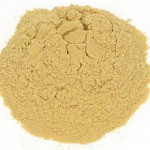

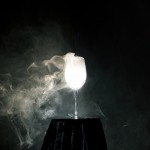
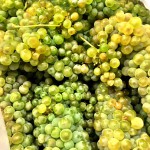
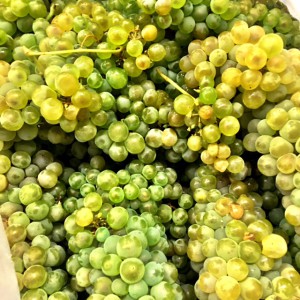


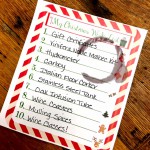
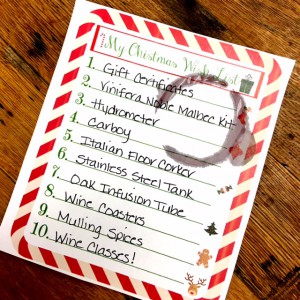
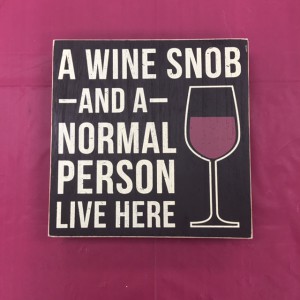



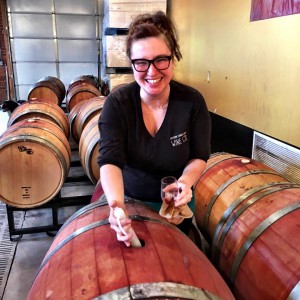

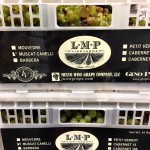
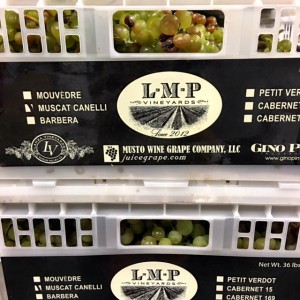
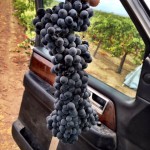
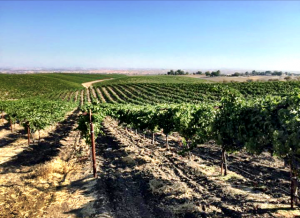
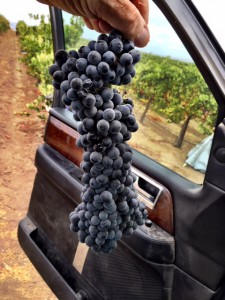
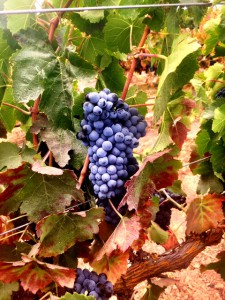
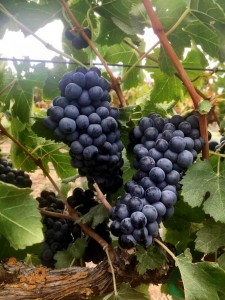
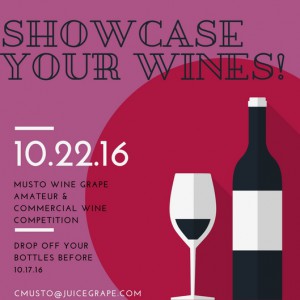
Recent Comments